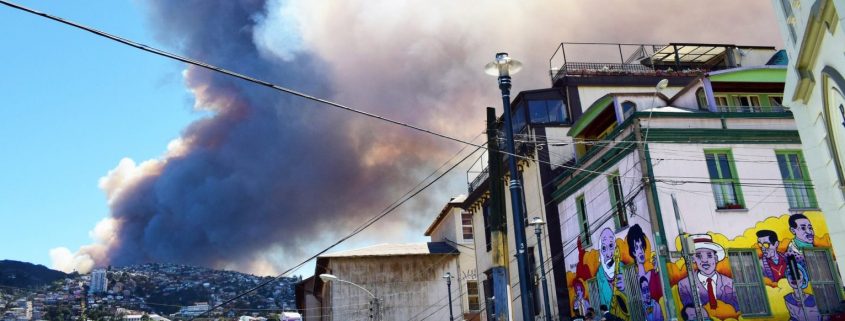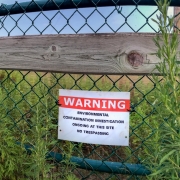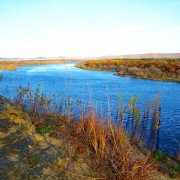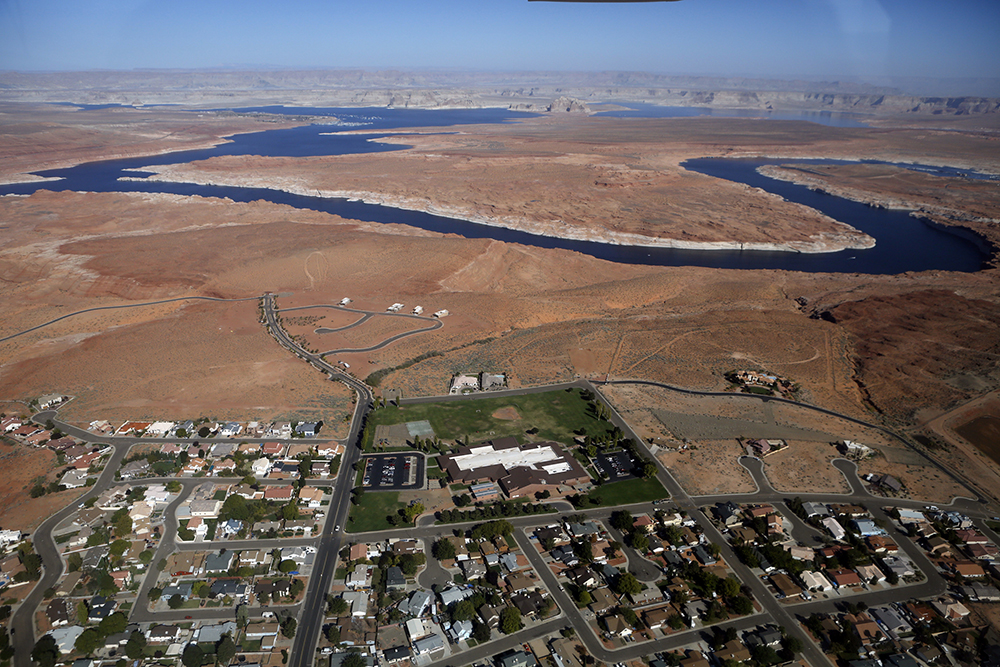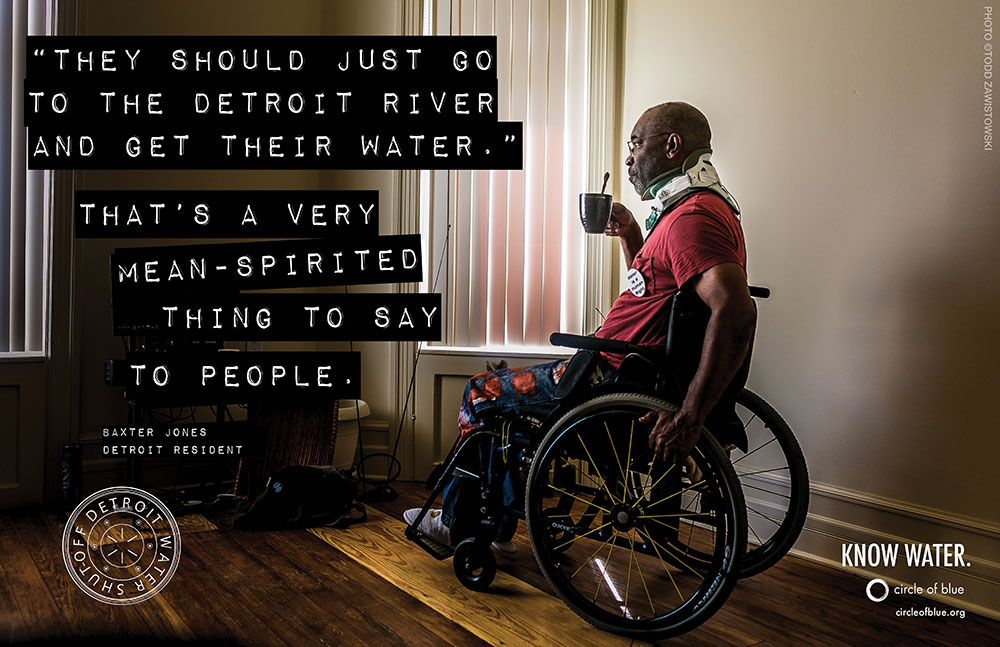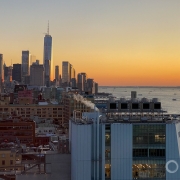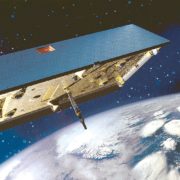Fire and Floods Test Chile
Extreme weather poses dual threat to water supplies, and provides glimpse of the future.
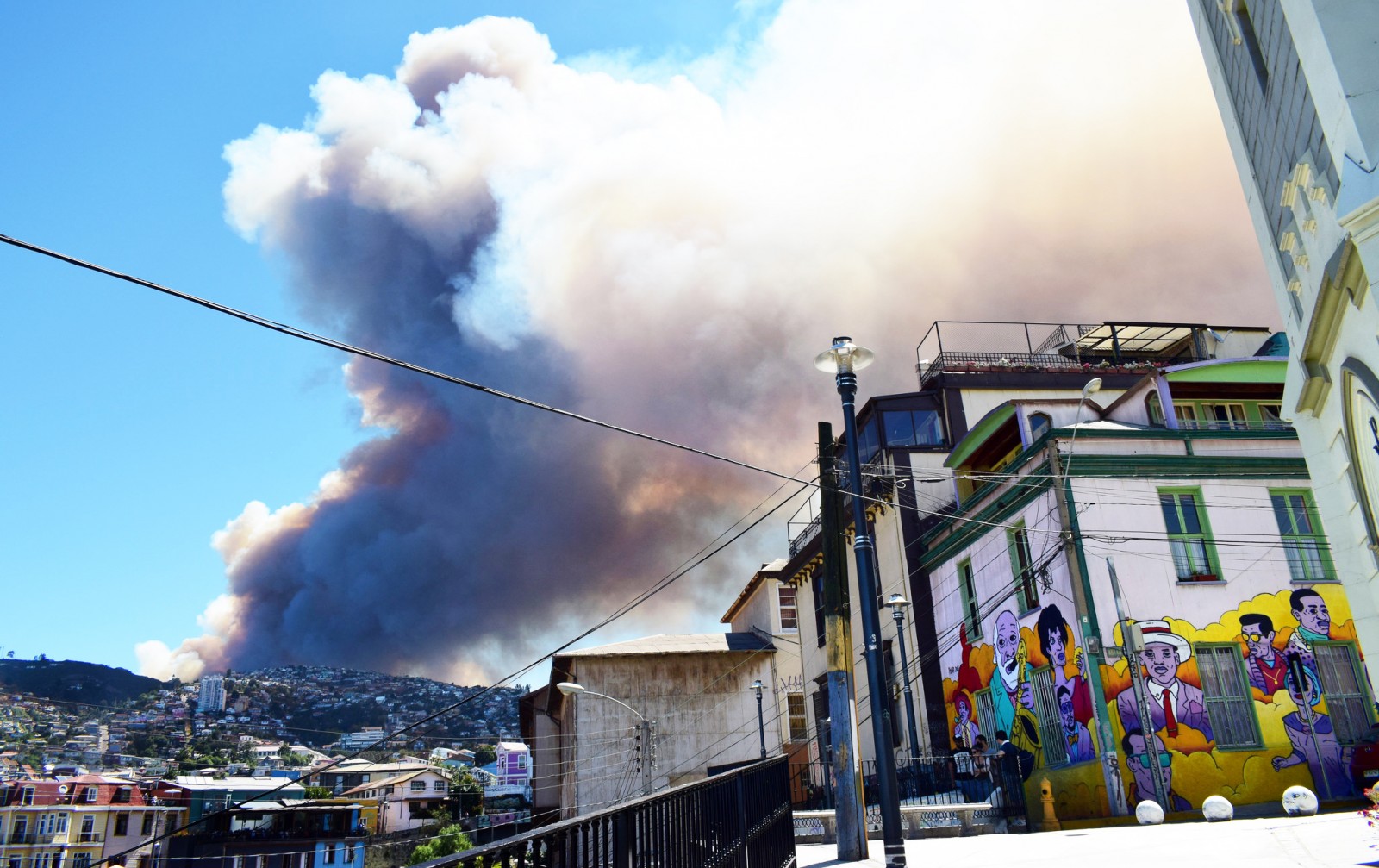
Smoke from a wildfire looms over Valparaíso, Chile in January. A drought helped stoke fires across central Chile, while fire damage contributed to landslides that contaminated water supplies in Santiago. Photo courtesy Zhu via Flickr Creative Commons.
The Rundown
Years of drought set the stage for a “firestorm” that burned thousands of hectares across Chile over the past two months. The fires forced evacuations from cities and towns and damaged water infrastructure in rural areas. Meanwhile, torrential rains swept away fire-ravaged mountainsides and contaminated the Maipo River, cutting the water supply to millions of people in the capital, Santiago. Scientists warn climate change will exacerbate the risk from extreme weather events like these, and will further stress water supplies for cities, mining, and agriculture.
“Chile lived a firestorm, and no country is prepared for this.” –Marc Castellnou, a forest fire specialist with the European Union Civil Protection System, reporting on a spate of wildfires that occurred in late January. Castellnou and other experts cited high temperatures and the accumulation of forest fuel during eight years of drought as key drivers of the fires’ unusual intensity and speed. The “mega-incendios” prompted the government to declare a state of emergency in January.
By The Numbers
606, 296 hectares Area burned by wildfires since July, 2016, more than eight times the 5-year average. The worst affected regions include Maule, O’Higgins, Valparaíso, and Bío Bío in central Chile. The fires damaged water distribution lines and forced some rural communities to rely on tanker trucks.
40 million liters of water Amount used to fight 681 fires during a three-week period in January and February. The firefighting effort included more than 3,000 emergency personnel and cost the government more than $26 million.
5 million people Number who lost water service in Santiago on February 26 after floods and mudslides contaminated the Maipo River. Officials said drought and fires in the river basin made the area more vulnerable to landslides.
Science, Studies, And Reports
The Maipo River Basin is home to one-third of Chile’s population and produces approximately 40 percent of its gross domestic product. The river is the main source of water for both cities and farms in the region. Climate change could reduce peak flows in the Maipo River by as much as 40 percent, putting drinking water supplies for Santiago at risk, according to scientists at the Pontifical Catholic University of Chile.
Researchers at the University of Chile also note that rising temperatures linked to climate change could increase the frequency of flash floods like those that disrupted Santiago’s water supply in February.
On The Radar
Against this backdrop, fierce debates continue over whether Chile’s water should be a public or private resource. The 1981 Water Code paved the way for the privatization of water systems and water rights, and private water utilities serve Santiago. Privatization, however, has spurred protests over high costs and inadequate service, and a survey released last year by the University of Santiago found that 74 percent of respondents believe water should be publicly controlled. The water code has also been criticized for usurping the water rights of indigenous communities. A government initiative to reform the code began in 2011 and is currently under review in the senate.
Resources And Further Reading
‘The Greatest Forest Disaster in Our History’: Wildfires Tear Through Chile (The New York Times)
Chile Forest Fire Statistics (CONAF)
Flooding Leaves Millions Without Water in Santiago, Chile (The New York Times)
The Heavy Price of Santiago’s Privatized Water (Guardian)
Chile’s Free Market Water Scheme Brings Scarcity and Conflict for Indigenous People (The Conversation)
A news correspondent for Circle of Blue based out of Hawaii. She writes The Stream, Circle of Blue’s daily digest of international water news trends. Her interests include food security, ecology and the Great Lakes.
Contact Codi Kozacek

